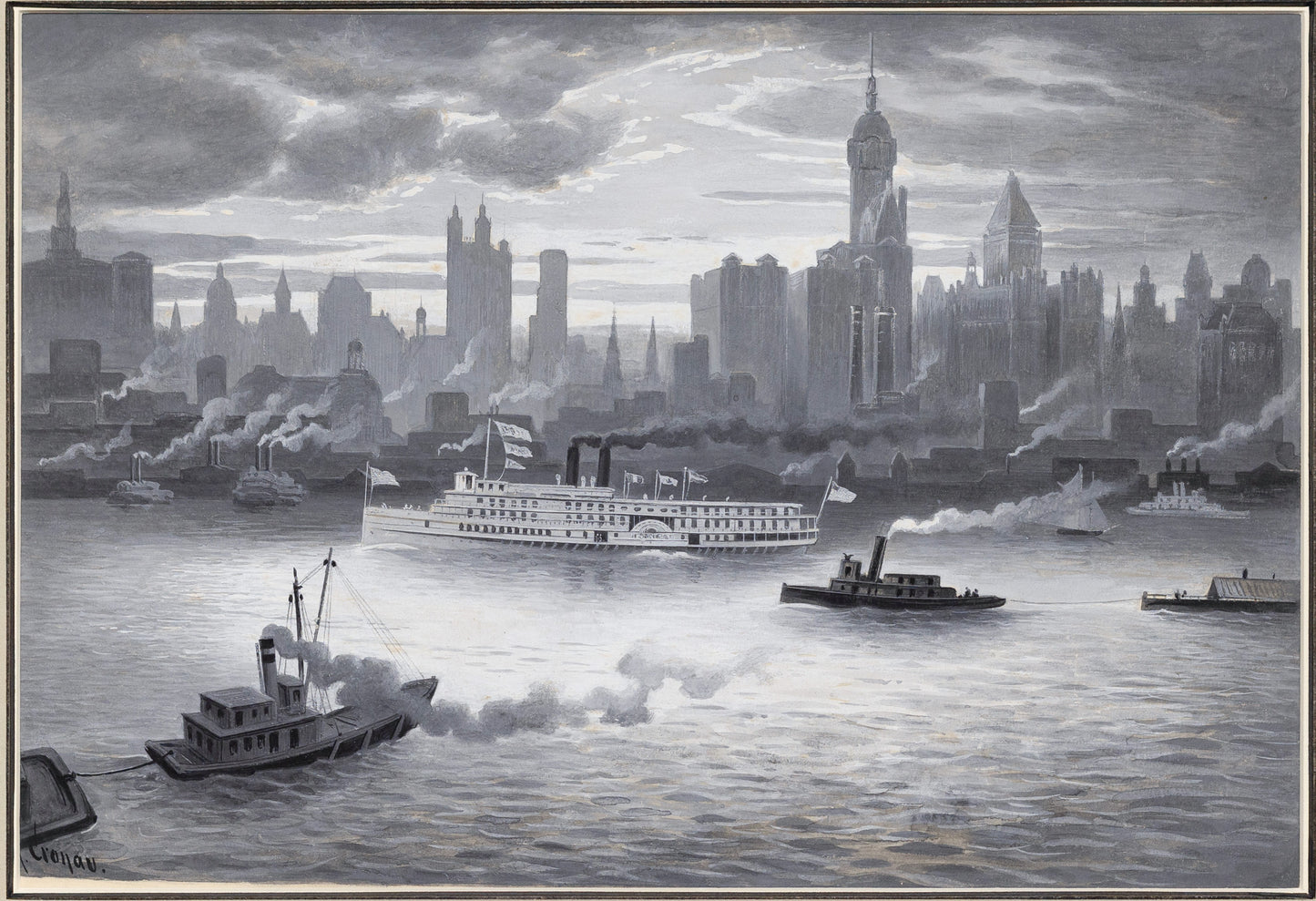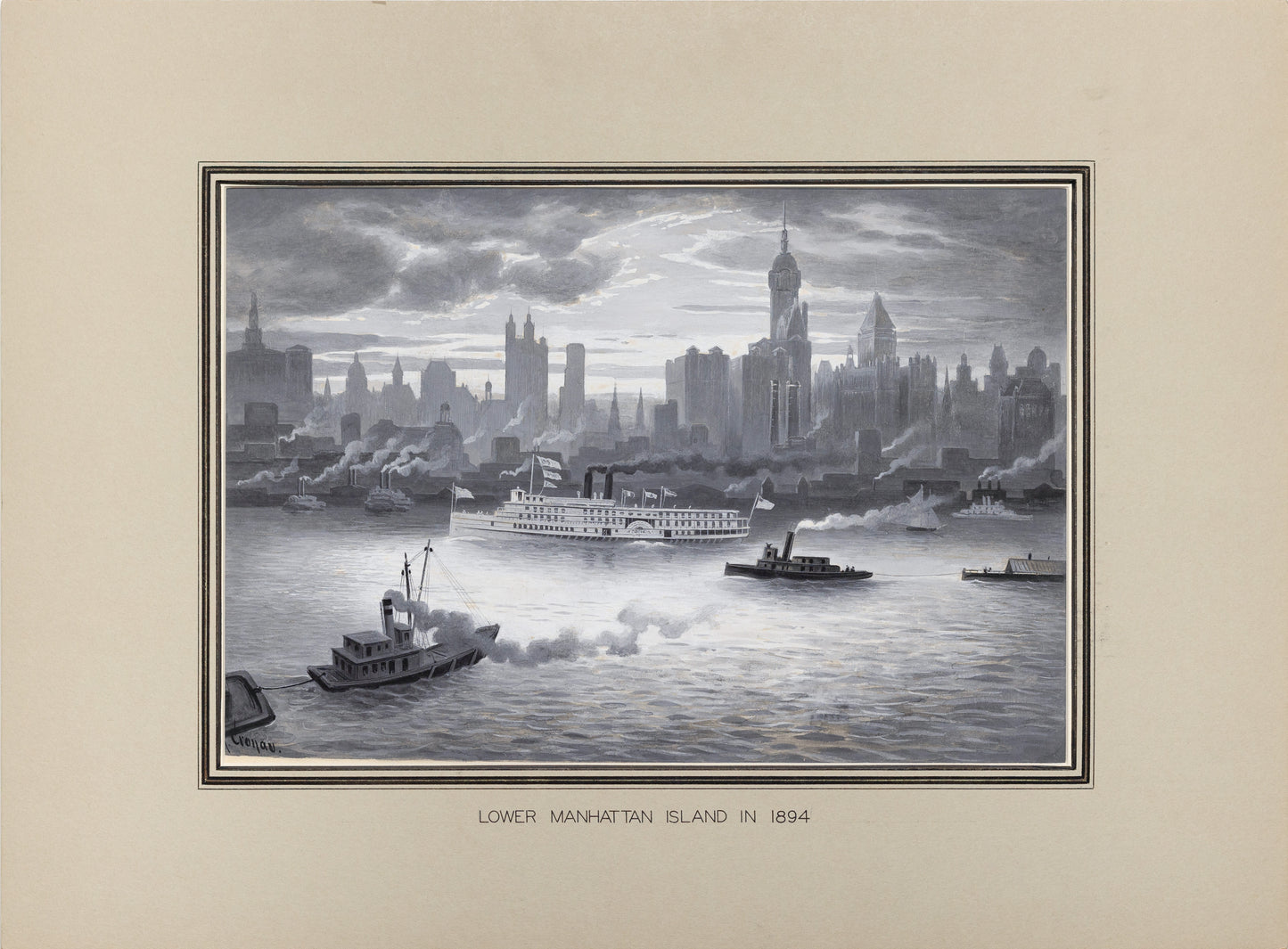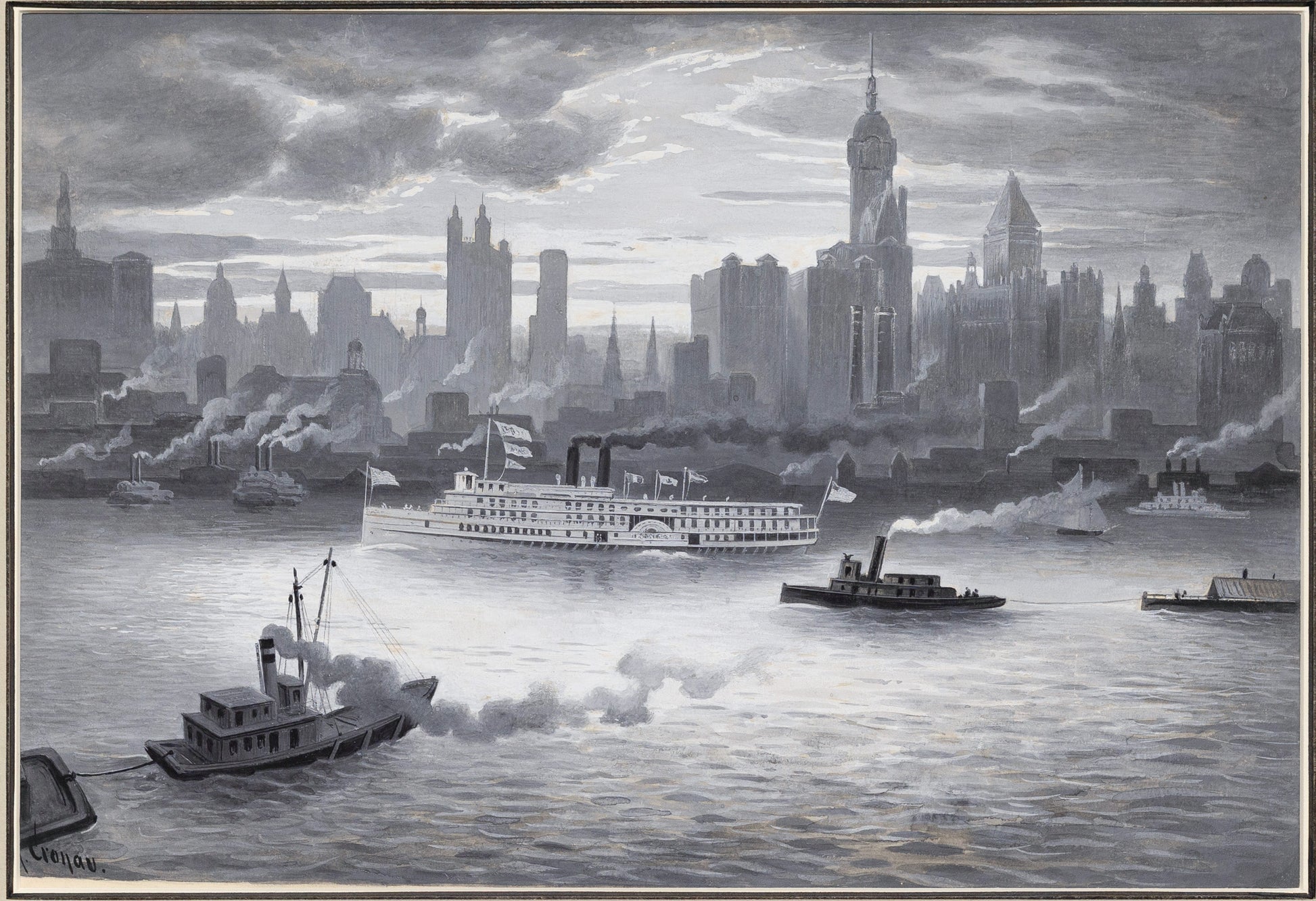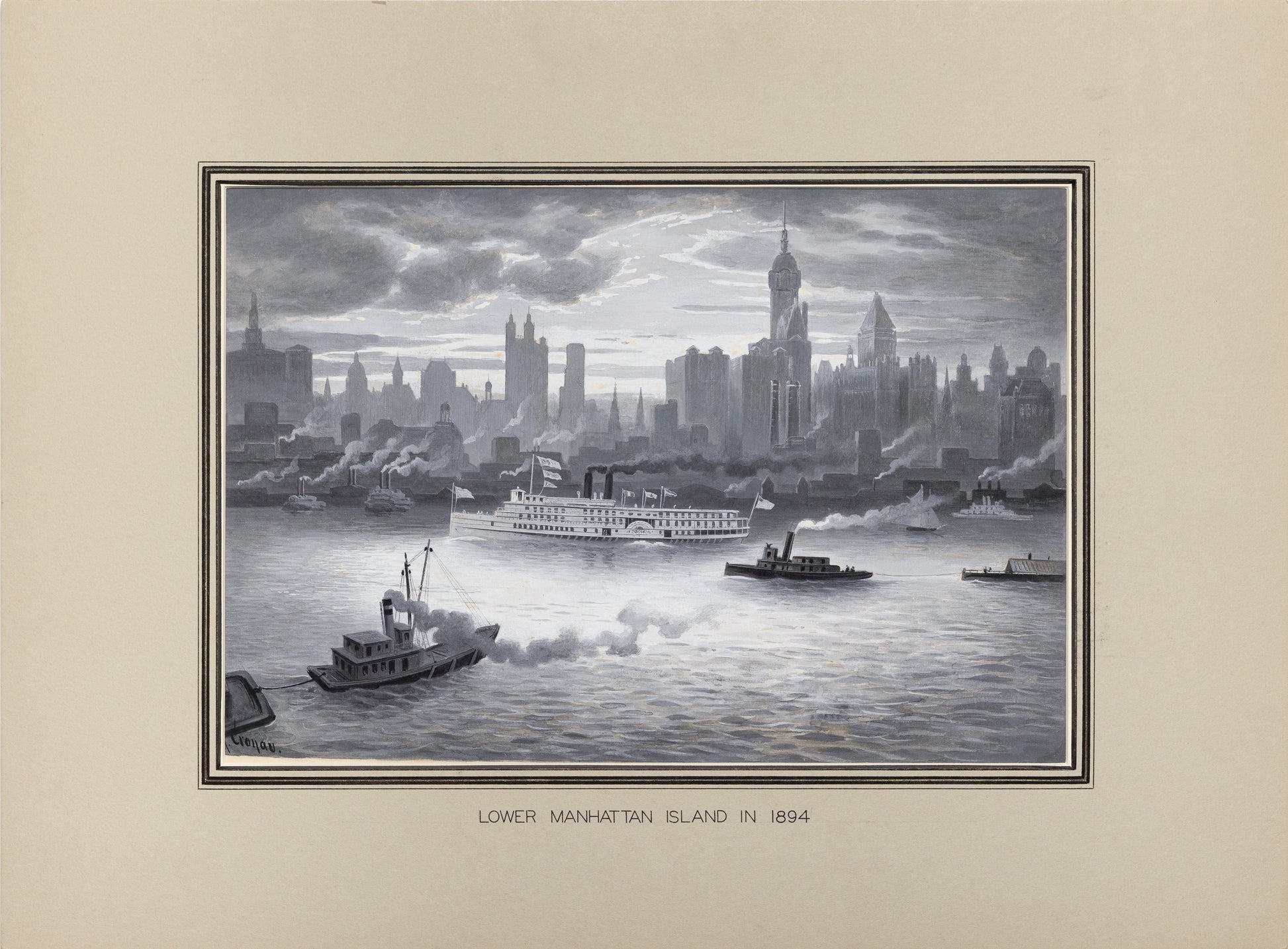from: U.S. City Views
RUDOLF DANIEL LUDWIG CRONAU (1855 - 1939) Lower Manhattan Island in 1894
RUDOLF DANIEL LUDWIG CRONAU (1855 - 1939) Lower Manhattan Island in 1894
Couldn't load pickup availability
RUDOLF DANIEL LUDWIG CRONAU (1855 - 1939)
Lower Manhattan Island in 1894
Watercolor and gouache on paper
Signed lower left: “R. Cronau”
ca. 1908-1913
Paper size: 10 3/8 x 13 3/8 in.
Mat/Mount size: 14 1/8 x 19 1⁄4 in.
THE EARLY YEARS OF THE SKYLINE
To understand New York in the late 19th century, one must look to the sky, where the city’s first skyscrapers began reshaping its identity and skyline. Faced with limited land and a booming population, architects and developers turned to new technologies like steel-frame construction and the safety elevator to build upward rather than outward. These innovations enabled the creation of towering structures such as the New York World Building (1890) and the Park Row Building (1899), which symbolized progress, ambition, and economic growth. This era marked the beginning of New York City’s transformation into a vertical metropolis, setting the foundation for its future as a global center of commerce and architecture.
Cronau's view here is shown taken from the vantage point in New Jersey, looking east out over the Hudson River and towards Manhattan. Rendered in Cronau's typical grisaille style, the skyline of lower Manhattan emerges from rolling clouds. The main identifiable buildings are, from left to right, City Hall (completed 1812), Park Row (completed 1899), Hudson Terminal (completed 1908), Singer Building (completed 1908), and the Bankers Trust Company (completed 1912).
Considering the skyline pictured, the title on the mat "Lower Manhattan Island in 1894" sows some confusion. Foremost, both the Singer Building and the Bankers Trust Company did not start construction until after the noted year. Adding to the complication is the anomaly of the Woolworth building’s absence. Construction started for the Woolworth Building on November 4, 1910 and was completed in 1912, overlapping with the Bankers Trust Company, but only the latter building is pictured fully erected.
On a special assignment for a German newspaper, Die Gartenlaube, artist Rudolph Cronau first traveled to America in 1881. There, he documented its cities, frontier lands, and the culture and customs of the Native American populations for curious European audiences fascinated by the American frontier. Upon his return to Germany in 1882, Cronau published 50 collotypes in a book about his American trip entitled Wunderland to Wunderland which was widely circulated. His illustrations are noted for their detail and precise craftsmanship in the German romantic style, characteristic of the training he received at the Royal Academy in Düsseldorf.
In 1894, Cronau returned to America as a foreign correspondent and was based in Washington, D.C. However, due to a falling out with his employers, he moved north to New York where he found work as a free-lance writer. Cronau eventually settled in New York, becoming an American citizen in 1900.




